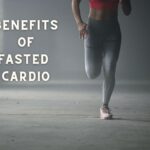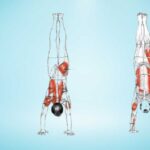In the ever-evolving realm of fitness, one trend has gained significant traction – fasted cardio. Delving into the intricate interplay of science and practicality, this article explores the benefits of fasted cardio in your fitness regimen.
Table of Contents
How Exercising While Fasted Forces Your Body to Burn Fat
Embarking on a fasted cardio journey delves into the intricate biochemistry of our bodies. Our physiological landscape shifts when we exercise while fasting, compelling the body to tap into its fat stores for energy. The absence of readily available carbohydrates prompts the body to utilize stored fat, initiating a process known as lipolysis.
In lipolysis, triglycerides stored in adipose tissue are broken down into fatty acids and glycerol. These liberated fatty acids enter the bloodstream, becoming a primary energy source for needy muscles. This intricate dance of molecular processes is the key to unlocking the fat-burning potential that fasted cardio enthusiasts strive to harness.
The Metabolic State Your Body Enters When Training Fasted
As you lace up your sneakers for a fasted cardio session, your body enters a metabolic state with profound implications. Fasting, especially during exercise, triggers a state known as ketosis. This metabolic phenomenon is characterized by an increased production of ketone bodies, which serve as an alternative energy source when glucose availability is limited.
Ketosis not only fosters efficient fat utilization but also showcases the human body’s adaptability. It’s a metabolic shift that echoes the evolutionary survival mechanisms of our ancestors, who thrived during periods of scarcity by relying on stored energy reserves.
Using Stored Body Fat as Fuel During Fasted Exercise
The beauty of fasted cardio lies in its ability to turn your body into a fat-burning furnace. By depleting glycogen stores through fasting, your system becomes primed to rely on stored body fat as the primary energy source. This dynamic shift in fuel preference is a testament to the body’s remarkable adaptability.
As your muscles demand energy during a fasted workout, the liberated fatty acids circulate in the bloodstream, entering cells and undergoing beta-oxidation. This process culminates in the production of adenosine triphosphate (ATP), the cellular currency of energy. Fasted cardio is a strategic maneuver that directs your body to utilize its internal fat reservoirs for a sustained and efficient energy supply.
Top Reasons to Try Fasted Cardio: Elevating Your Fitness Game
Increased Fat Burning
The allure of fasted cardio lies in its unparalleled ability to amplify fat-burning mechanisms. When you exercise on an empty stomach, your body taps into stored fat as a primary energy source, accelerating the rate at which fat is burned for fuel. This enhanced fat oxidation can be a game-changer for those aiming to shed stubborn adipose tissue and sculpt a lean physique.
Enhanced Metabolism
Fasted cardio acts as a metabolic catalyst, influencing the way your body processes and utilizes energy. The metabolic boost experienced during and after fasted exercise contributes to an overall heightened metabolic rate. This increased calorie burn extends beyond the workout, creating a sustained effect supporting weight management and metabolic health.
Improved Insulin Sensitivity
Engaging in fasted cardio positively impacts insulin sensitivity, a crucial aspect of metabolic health. When insulin sensitivity is optimized, cells respond more efficiently to insulin signals, promoting glucose uptake. This can help mitigate the risk of insulin resistance and type 2 diabetes, making fasted cardio a tool for weight management and a proactive measure for long-term metabolic well-being.
Boosts Brain-Derived Neurotrophic Factor: Nourishing Your Brain Through Fasted Cardio
Amidst the physical benefits of fasted cardio, there’s a hidden gem that transcends the realm of the body – the elevation of Brain-Derived Neurotrophic Factor (BDNF). This neurotrophin plays a pivotal role in brain health and cognitive function, making it a compelling reason to incorporate fasted cardio into your routine.
BDNF is like fertilizer for your brain cells, fostering the growth and maintenance of neurons. Fasted cardio induces a surge in BDNF production, creating an environment conducive to neuroplasticity – the brain’s ability to adapt and reorganize. This cognitive boost enhances your mental acuity and contributes to overall brain resilience and well-being.
Promotes Cellular Repair: Unleashing the Healing Power of Fasted Cardio
Beneath the surface, fasted cardio triggers a cascade of cellular processes beyond fat metabolism. Autophagy, a cellular recycling mechanism, is activated during periods of fasting and exercise, promoting the removal of damaged cellular components.
This cellular housekeeping is akin to a rejuvenating spa day for your cells, enhancing their efficiency and longevity. By engaging in fasted cardio, you inadvertently initiate a process that supports cellular repair, contributing to your body’s overall health and resilience at the microscopic level.
Supports Cardiovascular Health: The Heart of the Matter in Fasted Cardio
Your cardiovascular system stands to gain significant benefits from the practice of fasted cardio. Beyond the evident calorie burn and fat utilization, this exercise enhances cardiovascular health in various ways.
Fasted cardio promotes improved blood circulation and endothelial function, which are crucial to maintaining a healthy heart. The rhythmic contraction and relaxation of muscles during exercise stimulate blood flow, optimizing the delivery of oxygen and nutrients to tissues. Additionally, the metabolic adaptations induced by fasted cardio contribute to better cholesterol profiles and blood pressure regulation, further fortifying your cardiovascular resilience.
Aids Weight Loss Goals: Harnessing the Synergy of Fasting and Exercise
For those navigating the intricate landscape of weight loss, fasted cardio emerges as a powerful ally. The combination of fasting and exercise creates a synergistic effect that catapults your weight loss journey to new heights. The depleted glycogen stores and enhanced fat burning create an environment conducive to shedding excess pounds.
Moreover, the metabolic adaptations fostered by fasted cardio extend beyond the workout, influencing your body’s ability to burn calories throughout the day. This extended calorie burn, known as the afterburn effect or excess post-exercise oxygen consumption (EPOC), becomes valuable in pursuing sustainable and effective weight loss.
4 Simple Ways To Tone Up A Fatty Stomach Fast
Helps Break Through Weight Loss Plateaus: Breaking the Chains of Stagnation
Weight loss plateaus are the nemesis of many on the quest for a healthier, leaner physique. Fasted cardio is a potent weapon to shatter these plateaus and reignite progress. When your body becomes accustomed to a particular exercise or dietary routine, introducing the novelty of fasted cardio can serve as a metabolic shock.
The unique metabolic demands of fasted exercise force your body to adapt and respond, breaking the monotony and revving up your weight loss engine. This adaptability is a cornerstone in navigating the ebb and flow of a weight loss journey, ensuring that progress remains dynamic and sustainable.
Complements Intermittent Fasting Protocol: A Symbiotic Relationship
Fasted cardio finds its perfect counterpart in intermittent fasting, creating a symbiotic relationship that amplifies the benefits of both practices. Intermittent fasting, with its defined eating and fasting windows, sets the stage for fasted cardio to shine.
Exercising during the fasting window extends the period of depleted glycogen stores, maximizing the reliance on stored body fat for energy. This enhances the metabolic adaptations initiated by intermittent fasting, creating a holistic approach to weight management and overall well-being.
Allows You to Eat More Later: A Culinary Bonus
One of the unsung perks of fasted cardio is its flexibility in your dietary choices later in the day. By front-loading your exercise routine with an empty stomach, you create a metabolic buffer, allowing a more liberal approach to post-workout meals.
This doesn’t imply an open invitation to indulge in unhealthy foods but a strategic allowance for a slightly larger caloric intake post-exercise. The increased calorie burn and metabolic efficiency gained from fasted cardio create a favorable environment for nutrient absorption, giving you more culinary freedom without compromising your fitness goals.
Maximizing the Benefits of Fasted Cardio: Fine-Tuning Your Approach
Best Types of Fasted Cardio Workouts
Not all fasted cardio is created equal, and the choice of workout can significantly impact the benefits you reap. High-intensity interval Training (HIIT) and steady-state cardio are two prevalent options, each with unique advantages.
HIIT, characterized by short bursts of intense effort followed by rest periods, maximizes calorie burn and promotes fat oxidation. On the other hand, steady-state cardio, maintaining a consistent intensity throughout the session, provides a sustained fat-burning effect. Tailoring your choice of fasted cardio to your fitness goals and preferences ensures that you harness the benefits most aligned with your objectives.
Benefits & Types Of Cardiovascular Workouts
Ideal Duration and Intensity of Fasted Training
Finding the sweet spot for the duration and intensity of your fasted cardio is crucial for optimizing results. Striking a balance between pushing your limits and avoiding overtraining is critical. The ideal duration varies based on individual fitness levels and goals but generally falls within the 30 to 60-minute range.
As for intensity, it’s essential to challenge yourself without compromising form or risking injury. Whether you opt for a brisk jog, cycling, or a high-intensity circuit, ensure that the intensity aligns with your fitness level and allows for a sustainable workout routine.
Importance of Staying Hydrated Pre- and Post-Workout
While the focus is on fasting during exercise, hydration remains a non-negotiable aspect of your fasted cardio routine. Proper hydration supports overall performance and aids in mobilizing fatty acids for energy.
Ensuring adequate fluid intake before and after fasted cardio safeguards against dehydration and electrolyte imbalances. Opt for water or other low-calorie, non-stimulant beverages to replenish fluids without disrupting the fasting state.
When to Eat After Fasted Exercise
Post-fasted cardio, the timing of your first meal, is critical. Aim to consume a balanced meal within the first hour after exercise to maximize the benefits of your workout. This post-workout meal should include a combination of protein and carbohydrates to replenish glycogen stores, promote muscle recovery, and support overall recovery.
Balancing macronutrients is key – lean proteins, complex carbohydrates, and healthy fats create a synergistic effect that optimizes recovery and primes your body for subsequent fasted cardio sessions.
Additional Tips for Exercising While Fasted: Navigating the Journey Safely
Listen to Your Body and Allow for Rest Days
Embarking on a fasted cardio regimen demands attunement to your body’s signals. Paying close attention to how your body responds to exercise while fasting is paramount. If fatigue or signs of overtraining emerge, allow for adequate rest days to foster recovery.
Rest days are not a sign of weakness but a strategic investment in long-term fitness and well-being. By respecting your body’s need for recovery, you ensure that each fasted cardio session is a step towards progress, not a risk to your overall health.
Prioritize Sleep for Optimal Recovery
The symbiotic relationship between sleep and exercise takes center stage when engaging in fasted cardio. Quality sleep is the cornerstone of optimal recovery, influencing hormone regulation, immune function, and overall well-being.
Establishing a consistent sleep routine, prioritizing adequate hours of rest, and creating a conducive sleep environment are crucial components of a successful fasted cardio journey. The benefits of exercise are maximized when complemented by restorative sleep, creating a holistic approach to health and fitness.
Pay Attention to Hunger Cues After Workouts
Fasted cardio may amplify hunger cues post-exercise, prompting the need for mindful eating. While there’s a temptation to indulge in larger meals, it’s essential to differentiate between actual hunger and the desire to reward yourself post-workout.
Opt for nutrient-dense meals that align with your overall dietary goals. Balancing protein, carbohydrates, and fats in your post-workout meals supports recovery. It ensures that you meet your nutritional needs without sabotaging your hard-earned progress.
Supplementing with BCAAs or EAAs While Fasting
Branch Chain Amino Acids (BCAAs) or Essential Amino Acids (EAAs) can be strategic allies in your fasted cardio arsenal. These supplements, particularly BCAAs, provide a source of amino acids that can be readily utilized by muscles during exercise.
Incorporating BCAAs or EAAs before and during fasted cardio sessions can help mitigate muscle breakdown and enhance overall performance. This targeted supplementation complements the fasting state, ensuring your muscles have the necessary building blocks for endurance and recovery.
The Takeaway on Fasted Cardio Benefits: Crafting Your Fitness Narrative
An Effective Tool for Fat Loss Goals
Fasted cardio emerges as a potent tool in the arsenal of those striving for fat loss. The strategic utilization of stored body fat as an energy source and metabolic adaptations create an environment conducive to shedding excess weight.
This approach to exercise transcends conventional paradigms, tapping into the intricate dance of physiology to sculpt a leaner, healthier physique. Fasted cardio is not merely a trend but a scientifically backed strategy for those seeking sustainable and effective fat loss.
Provides Unique Health Benefits Beyond Weight Loss
Beyond the aesthetic allure of a toned physique, fasted cardio bestows myriad health benefits. From improved insulin sensitivity and cardiovascular health to the elevation of BDNF, the impact extends far beyond the number on the scale.
Engaging in fasted cardio becomes a holistic endeavor, intertwining physical and mental well-being. It’s a journey transcends vanity, embracing the profound interconnectedness of our body’s intricate systems.
Not for Everyone – Learn What Works for You
While the benefits of fasted cardio are compelling, it’s essential to recognize that this approach may only be suitable for some. Individual responses to fasting and exercise vary, influenced by metabolism, fitness level, and overall health.
Listening to your body’s cues and consulting with healthcare professionals or fitness experts can help tailor your approach. What matters is finding a sustainable fitness routine that aligns with your goals and respects your unique physiological makeup.
Consider Trying Both Fasted and Fed State Exercise
Variety is the spice of life, and the same holds true for your fitness regimen. Balancing fasted and fed state exercise allows you to harness the benefits of both approaches. The human body’s adaptability shines when exposed to diverse stimuli, preventing monotony and enhancing overall fitness.
By alternating between fasted and fed state exercise, you create a dynamic routine that keeps your body guessing. This unpredictability fosters continued adaptation and progress, ensuring your fitness journey remains engaging and effective.
Be Patient and Listen to Your Body’s Feedback
In pursuing fitness goals, patience is not merely a virtue – it’s a prerequisite. Fasted cardio, like any other exercise strategy, requires the body to adapt and results to manifest. Patience is paramount. Achieving and maintaining results with fast cardio requires consistency, adaptability, and a keen awareness of your body’s feedback.
A Word from Blogzah
A fasted cardio stands as a multifaceted strategy with benefits extending beyond the realms of weight loss. Embrace the science, tailor your approach, and embark on a journey that aligns seamlessly with your fitness aspirations.
What to Eat After Fasted Cardio
After engaging in fasted cardio, it’s crucial to replenish your energy stores and support recovery. You should consume a balanced meal with carbohydrates and proteins. Carbohydrates replenish glycogen stores, while proteins aid in muscle repair and growth. Including some healthy fats can also be beneficial. A post-fasted cardio meal might include whole grain toast with peanut butter, Greek yogurt with fruit, or a protein shake with added carbohydrates.
What is Fasted Cardio
Fasted cardio refers to performing cardiovascular exercise in a state where your body has not recently consumed food, typically in the morning before eating. The idea is that, in the absence of readily available glucose from food, the body will rely more on stored fat for energy during the workout.
Does Fasted Cardio Burn More Fat
Fasted cardio revolves around the theory that when you exercise in a fasted state, your body relies more on stored fat as a fuel source. While some studies suggest fasted cardio may increase fat oxidation during exercise, the overall impact on fat loss is similar to non-fasted cardio. The difference in fat loss between fasted and non-fasted cardio is likely marginal and may vary among individuals.
Is Fasted Cardio Better
Whether fasted cardio is better depends on individual preferences, goals, and how your body responds to different training approaches. Some people prefer fasted cardio as it fits into their schedule. In contrast, others may find it uncomfortable or like to eat before a workout. The key to successful fat loss is creating a sustainable calorie deficit through diet and exercise. Whether you choose fasted or non-fasted cardio, consistency is critical.
Is Fasted Cardio a Myth
Fasted cardio is not a myth; it is a natural and practiced approach to training. However, the effectiveness of fasted cardio for fat loss has been debated among researchers. While some studies suggest potential benefits, others indicate no significant difference in fat loss between fasted and non-fasted cardio. It’s essential to consider individual factors such as lifestyle, preferences, and overall diet.
Is Fasted Cardio Good
Fasted cardio can be a viable option for some individuals, especially if it aligns with their preferences and lifestyle. However, it’s not a one-size-fits-all approach. Some people may feel energized and perform well during fasted cardio, while others may experience fatigue and find it challenging. It’s crucial to listen to your body and choose a routine that you can maintain consistently.
What Does Fasted Cardio Do
Fasted cardio aims to capitalize on the body’s use of stored fat as a primary energy source when glucose levels are low. During fasting, insulin levels drop, and the body’s reliance on fat for energy increases. Cardio during this state may enhance fat oxidation during the workout. However, the overall impact on fat loss is influenced by various factors, including diet, overall calorie expenditure, and individual response to training.
Is Fasted Cardio Better for Fat Loss
While fasted cardio may increase fat oxidation during the workout, its impact on overall fat loss is not conclusively proven to be superior to non-fasted cardio. The key to effective fat loss remains creating a sustainable calorie deficit through diet and exercise. Choosing an approach that aligns with your preferences and lifestyle is crucial and allows for consistent adherence to your fitness routine.
References:
1. Schoenfeld, B. J. Does cardio after an overnight fast maximize fat loss? Strength & Conditioning Journal, 33(1), 23-25.
2. Van Proeyen, K., Szlufcik, K., Nielens, H., Ramaekers, M., & Hespel, P. Beneficial metabolic adaptations due to endurance exercise training in the fasted state. Journal of Applied Physiology, 110(1), 236-245.
3. Paoli, A., Marcolin, G., & Zonin, F. Exercising fasting or fed to enhance fat loss? Influence of food intake on respiratory ratio and excess postexercise oxygen consumption after a bout of endurance training. International Journal of Sport Nutrition and Exercise Metabolism, 21(1), 48-54.
















